A significant one is the Govind Wildlife Sanctuary in the Uttarkashi district of the Indian state of Uttarakhand. Nature parks and wildlife sanctuaries serve as safe havens for the varied flora and fauna. Govind Pashu Vihar Wildlife Sanctuary was created in 1955 and first served as a wildlife sanctuary before becoming a national park. The region where this national park is located has a rich history, and several stories are connected to it as well. The epic Ramayana is directly associated with a legendary example.
Location
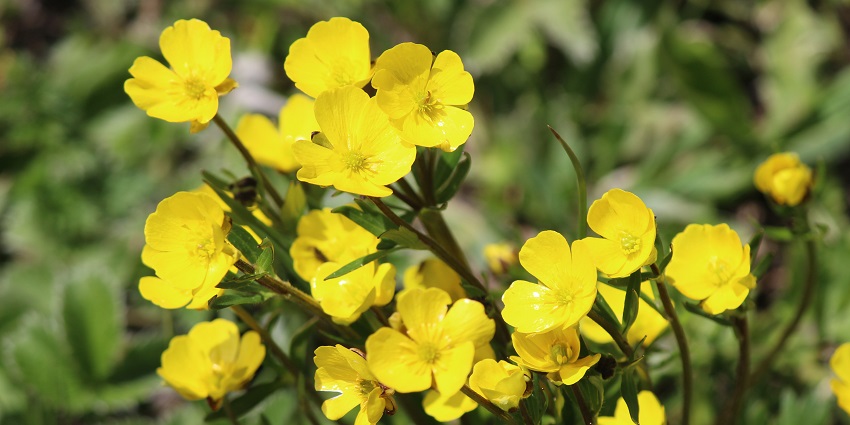
Photo: Anshul24Sharma / Wikimedia Commons / Image For Representation Only
In the Uttarkashi district of Uttrakhand, the high Western Himalayan highlands are home to Govind National Park (GNP) and Govind Pashu Vihar Wildlife Sanctuary (GWS). Covering 957.969 square kilometres, the incredibly remote Har ki Dun (3510m) is a botanical paradise crisscrossed by glacial streams and encircled by snow-capped peaks and pristine woods. The sanctuary’s entrance and beginning point are Naitwar.
Suggested Read: Jim Corbett Jungle Safari A Wild Encounter
How To Reach

Photo: Anonymous8010 / Wikimedia Commons / Image For Representation Only
By Road: It takes a bus or taxi from Dehradun/Rishikesh to Dharkadhi, the closest village to Govind National Park, which is 17 kilometres away from the park. The Forest Road, which connects the Sanctuary to the State Highway near Mori, is the only direct route to the Park.
By Rail: The closest railway station to Govind Pashu Vihar National Park & Wildlife Sanctuary is Dehradun Railway Station.
By Air: Uttarkashi Jolly Grant Airport is the closest airport to Dehradun and is used to access Govind National Park/Wildlife Sanctuary. Dehradun is 199 kilometres away.
Places To Visit In And Around Govind Wildlife Sanctuary
1. Sankri village
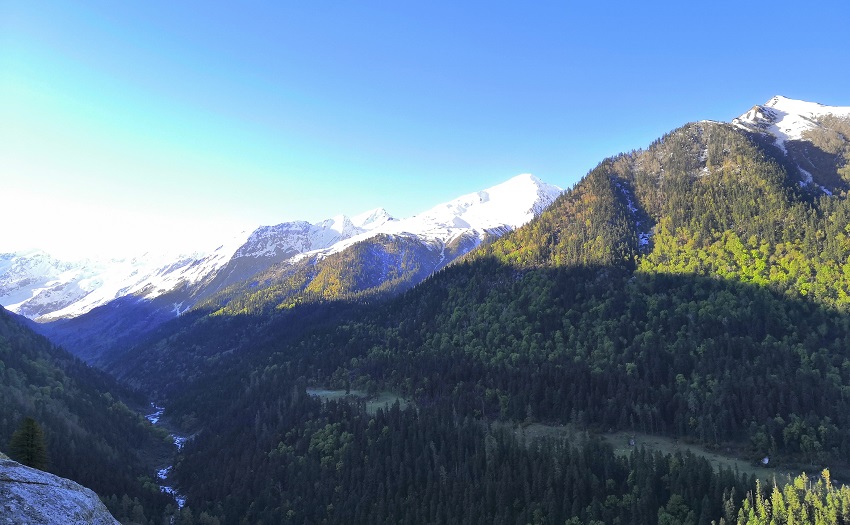
Photo: Ash1091patil / Wikimedia Commons
Every hiker can reach the Paradise of the Himalayas via Uttarakhand’s Sankri Village. It is a trekker’s paradise in addition to being a picturesque hamlet in the Uttarkashi district. An unmatched chance to experience the Himalayas’ unspoiled splendour is provided by Sankri, Uttarakhand. From verdant forests to towering peaks and placid alpine lakes, every trail creates its own unique tapestry of natural beauties. There is a trail here for every level of traveller, from experienced hikers to first-time explorers.
Best Time To Visit: December to April
Suggested Read: Paragliding In Uttarakhand
2. Kedarkantha Peak
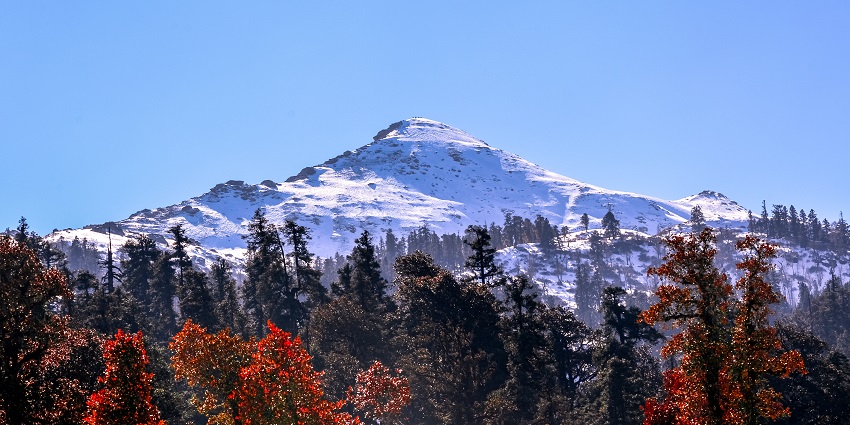
Photo: Kanthi Kiran / Wikimedia Commons
A ridge peak with a maximum elevation of more than 12,500 feet, Kedarkantha is situated on the park’s southern borders. Among trekkers who are just starting to explore the highlands, it is without a doubt the most popular hiking path. Because of its beautiful scenery, which includes snow in the winter, and how easy the walk is, it is very popular. The trip from Dehradun can be finished in about five days. For a safe and enjoyable trekking experience, the difficult terrain necessitates meticulous preparation and commitment to safety measures.
Best Time To Visit: December to February
3. Har Ki Dun

Photo: Omkar / Wikimedia Commons
The stunning valley known as Har Ki Dun, or the “Valley of Gods,” is situated in the northwest interior of Govind National Park. It is reached after passing through Osla, the park’s final village, which is home to more than 200 families and is renowned for its distinctive fusion of architecture and culture. This village is located 11 kilometres away from the valley. 50 kilometres is the entire trekking distance (25 in each direction). From Dehradun, this journey may be finished in at least six days. The hike offers the chance to see either the Jaundhar Glacier or Marinda Lake.
Best Time To Visit: May, June and September
Suggested Read: Things to Do In Landour
4. Bali Pass

Photo: Ash1091patil / Wikimedia Commons / Image For Representation Only
One of the special features of this Bali Pass trip is the stunning Ruinsara Lake along the way. It’s an unusual trek. The journey is one of the western Himalayas’ uncharted routes. Up to the Seema campground, the itinerary corresponds with the Har ki Dun walk. You continue on to the Ruinsara Gorge, which is covered with a variety of exotic woods. The trek is not mild. Therefore, before starting this lovely journey to Bali Pass, the trekkers are urged to be well-prepared.
Best Time To Visit: May, June, September and October
5. Marinda Tal
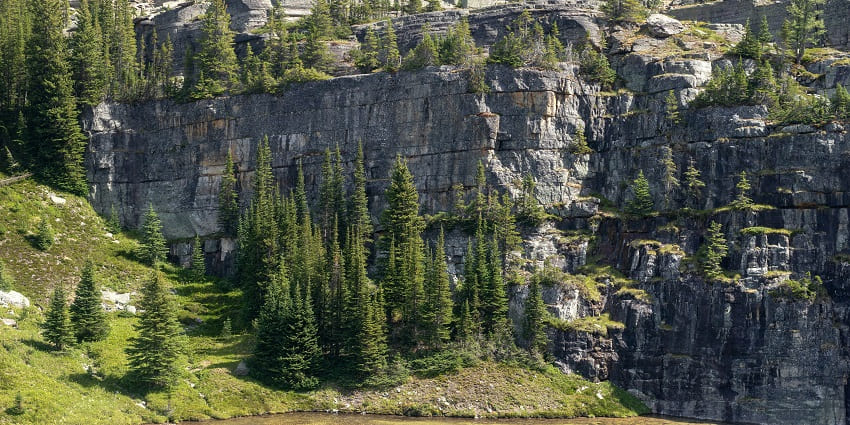
Photo: Sam Dawson / Unsplash / Image For Representation Only
The stunning high-altitude lake known as Marinda Tal (or Morinda Tal) is accessible for exploration once you get in Har Ki Dun Valley. Located at an elevation of around 3,970 meters, Maninda Tal appears stunning when viewed from the Swargarohini peak in the distance. Around the lake, there are several Brahma Kamal during the busiest time of year. Photographers will find the sights to be a treasure trove and a source of tranquility. Oak and pine trees grow high along the road to Maninda Tal.
Best Time To Visit: May to June and September to October
Suggested Read: Bungee Jumping In Rishikesh
Where To Stay
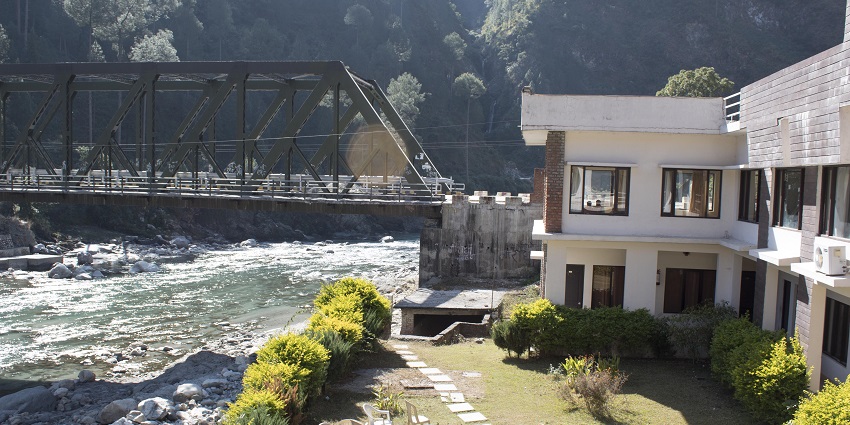
Photo: Vijayantybm / Wikimedia Commons / Image For Representation Only
The Himalayan region is home to the concept-based wellness resort known as Club Mahindra Kanatal, which stands for restoration. With its luxurious array of spa treatments, known as Rasayana, the Club Mahindra Kanatal resort, an emblem for ultimate living, offers the necessary components for discovering one’s inner self. The Har ki Dun Forest Rest House is a popular tourist destination, set amid a valley of stunning wildflowers. Other options include Hotel Geetanjali Resort, Hotel Ganga Sagar, and Hotel Dev Dham. These hotels offer free parking, WiFi, breakfast, a restaurant, laundry facilities, and more.
What To Eat

Photo: Prabal Pratap Singh / Pexels / Image For Representation Only
Uttarkashi’s culinary heritage is heavily shaped by the regional Garhwali cuisine, which is based on the seasonal availability of ingredients and the staples grown in the hilly region. Indulge in genuine Garhwali food, which not only pleases the taste buds but also evokes the region’s culinary past. Some of the best foods to try when visiting Govind National Park are Thulma, Chainsoo, Kafuli and Gulgula.
Suggested Read: Trekking And Camping In Rishikesh
Best Time To Visit
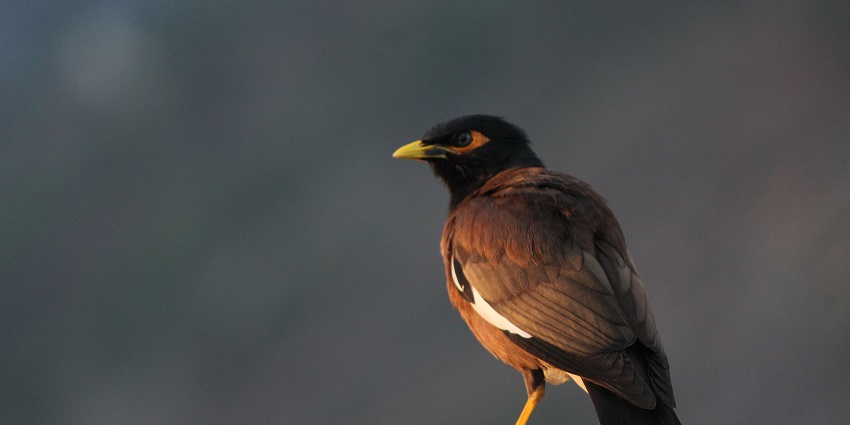
Photo: Anshul24Sharma / Wikimedia Commons / Image For Representation Only
March to May is the best time to visit the wildlife sanctuary as the weather is pleasant and temperate, with bright skies and comfortable temperatures that make it perfect for hiking, observing wildlife, and discovering the various ecosystems within the sanctuary. Animal activity increases as winter comes to an end during this season.
Other Factors To Consider

Photo: Dariusz Sankowski / Unsplash / Image For Representation Only
Tips For Travellers:
- Numerous endangered plant and animal species can be found at the Govind Pashu Vihar Wildlife Sanctuary. Follow the rules set forth by the forest authorities and act as a responsible visitor.
- It is not advised to travel to the hills during the monsoon because of the unpredictability of the weather. The area is vulnerable to unforeseen landslides, cloudbursts, and barricades, and the roads frequently get slick.
- There is a little admission cost to wildlife sanctuary, and there are extra fees for taking pictures and recording videos, respectively.
- Having a competent tour guide with you on your walk is advised. The guide would be well-versed in the route and advise you on how to safely veer off course.
Suggested Read: Places For Trekking In Nainital
Uttarakhand’s Uttarkashi district is home to the Govind Pashu Vihar Wildlife Sanctuary. There are 15 species of mammals and 150 species of birds. Along with other plant species like deciduous trees, conifers, and alpine shrubs, the park also has medicinal herbs. The Snow Leopard project, which primarily focuses on snow leopard conservation, is promoted. Plan a trip with TripXL and learn more about the Govind Wildlife Sanctuary.
Cover Photo: Naomi Lacroix / Pexels / Image For Representation Only


 WhatsApp
WhatsApp
 Twitter
Twitter









